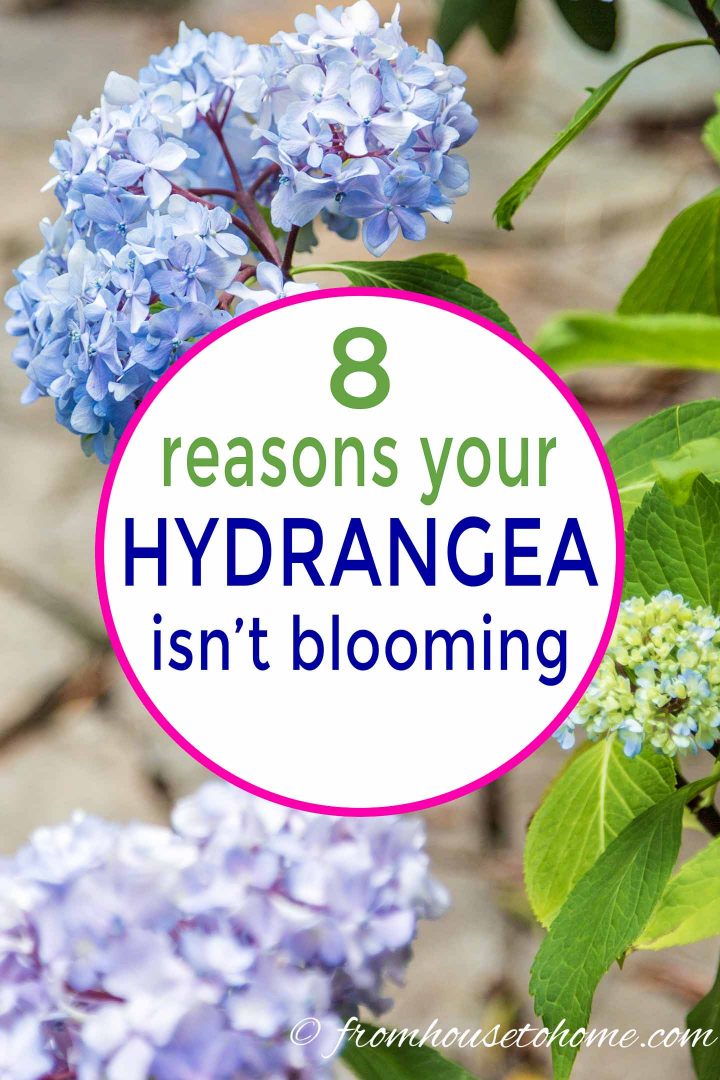Struggling With Stubborn Hydrangeas? Unlock the Secrets to Blooming Success!
Having trouble with your hydrangeas not blooming? Find out how to fix the problems so that you can grow these beautiful flowers in your garden.

I love Hydrangeas!
Those big beautiful flowers always brighten up a summer garden.
Except when they decide NOT to bloom for some reason.
Then they're just a big disappointment.
Fortunately, there are a few common reasons why Hydrangeas don't bloom.
And most of them are pretty easy to fix.
So if your Hydrangea isn't blooming, keep reading to find out why.
What type of Hydrangea do you have?
The first thing to know is that there are many different types of Hydrangeas, and they have different blooming requirements.
So before you can figure out why your plant isn't blooming, you need to know what kind of Hydrangea you have.
Here are the most common garden varieties:
Hydrangea macrophylla – Big Leaf Hydrangea, Mophead Hydrangea, Lacecap Hydrangea
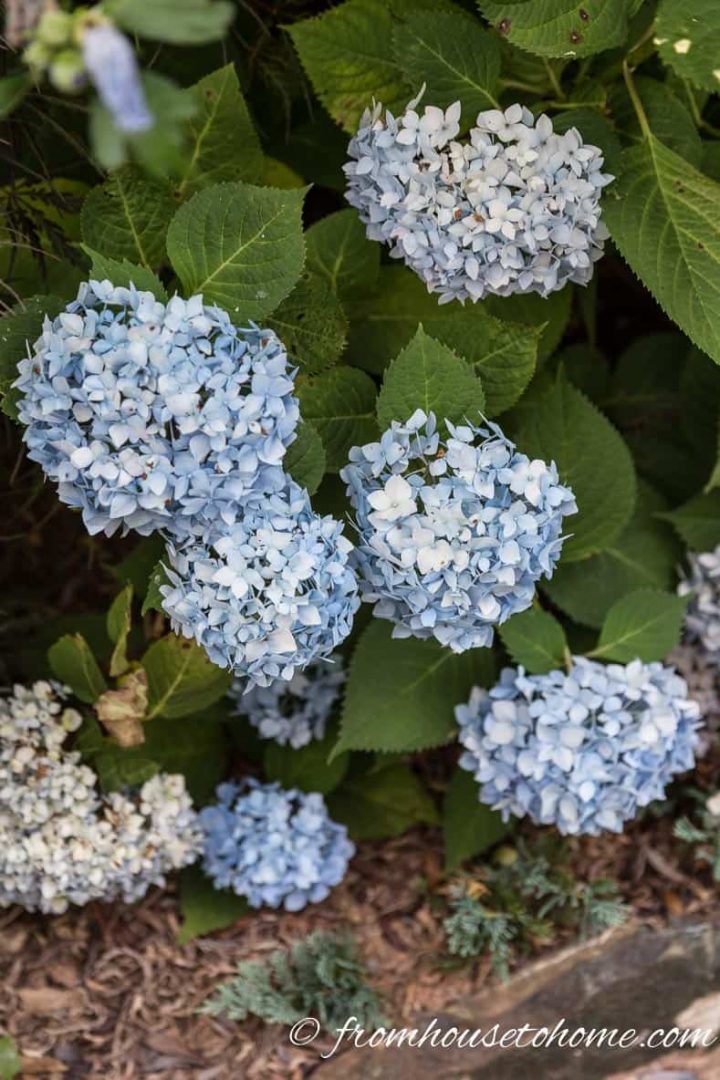
The Big Leaf Hydrangea is the variety that most people think of when they hear the word Hydrangea.
As the name implies, they have fairly large leaves that are rounded to a point.
The mophead variety is the one with the flowers that form large round balls (in the picture above).
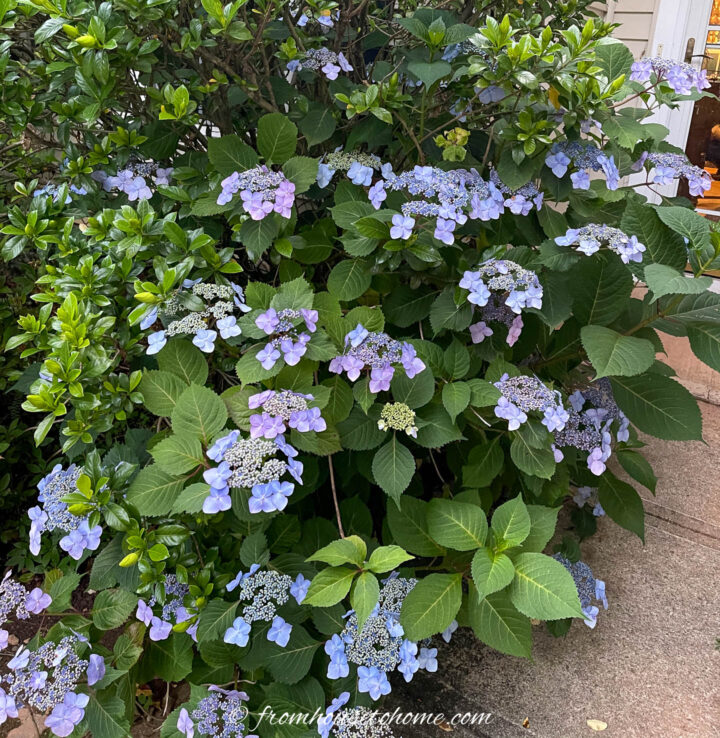
The lacecap variety is the one with flatter flower heads that look more delicate and lace-like.
Hydrangea serrata – Mountain Hydrangea
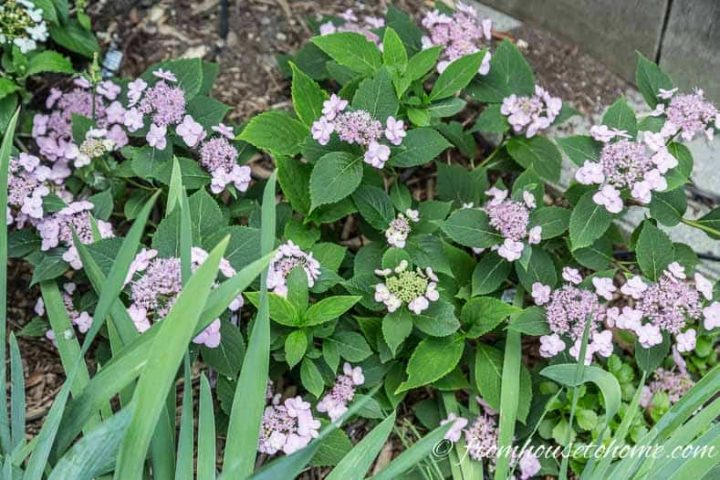
The mountain Hydrangea looks like a smaller version of the lacecap Hydrangea macrophylla.
And has all the same growing characteristics as its larger cousin.
Hydrangea paniculata – Panicle Hydrangea
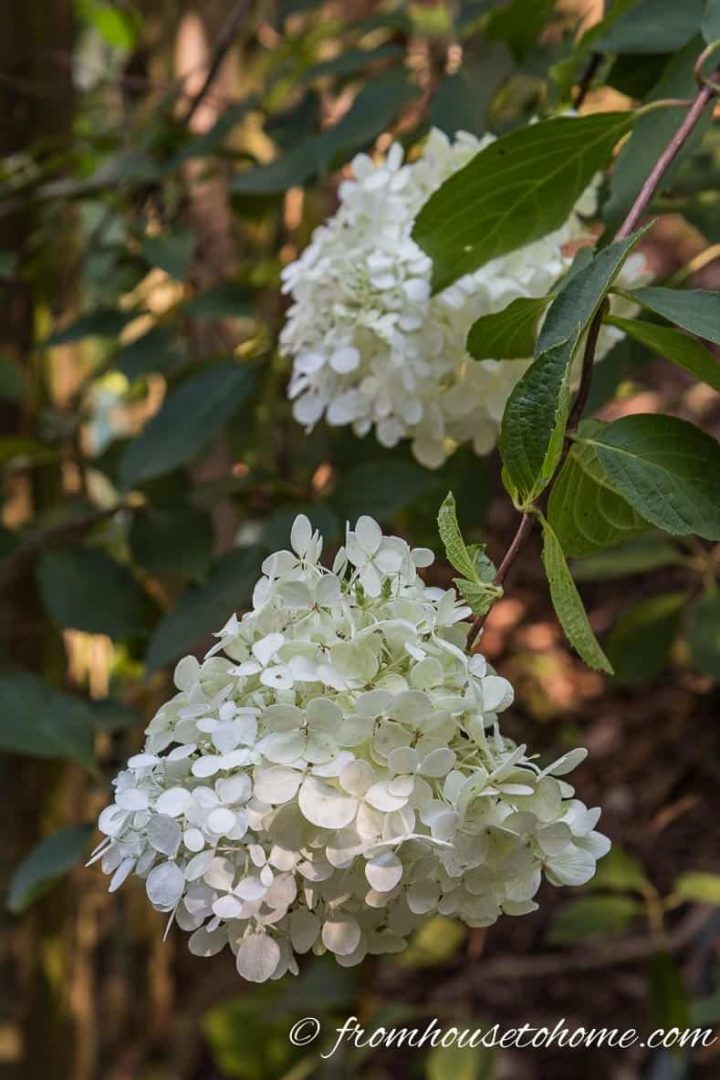
The flowers on Hydrangea paniculata are more oblong than the ones on the big leaf hydrangea, but they are equally as showy.
They tend to start out as a white or greenish color and then turn to a shade of pink.
Hydrangea aborescens – Smooth Hydrangea, Annabelle Hydrangea
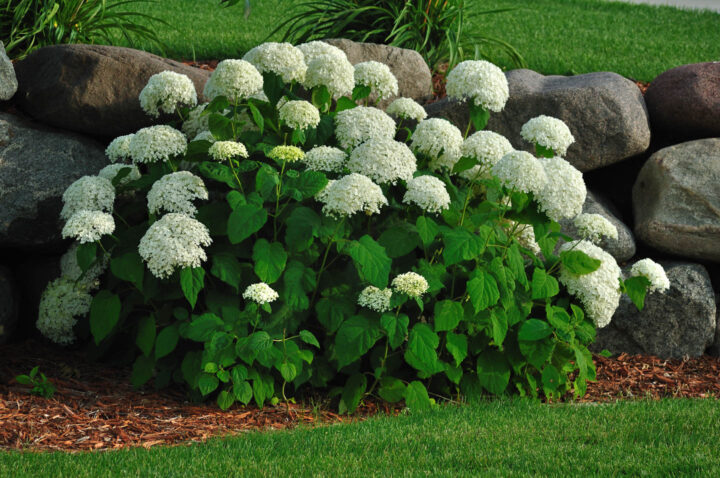
Hydrangea aborescens is a native species of Hydrangea that grows wild across much of the United States.
Traditionally, it was mostly available with large white balls of flowers, but recently some varieties with pink flowers have become more popular.
Hydrangea quercifolia – Oakleaf Hydrangea
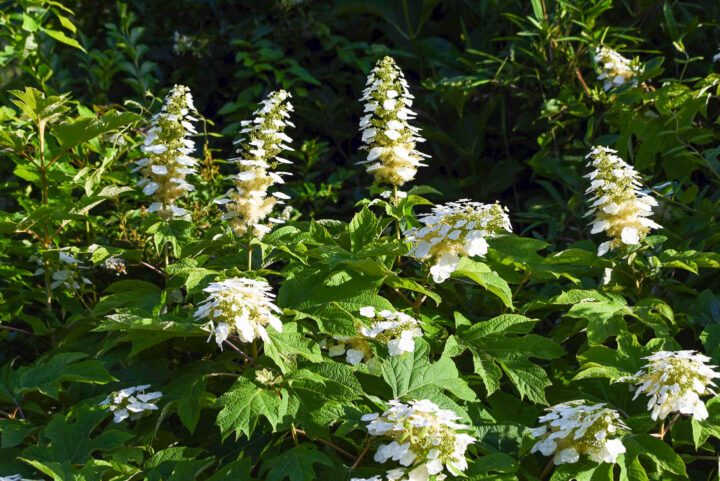
Oakleaf Hydrangea is another native species.
It has oblong (rather than round) balls of flowers that are usually white.
The tell-tale sign of the oakleaf variety is the shape of the leaves, which (as you may have guessed) are in the shape of oak leaves.
Hydrangea petiolaris – Climbing Hydrangea
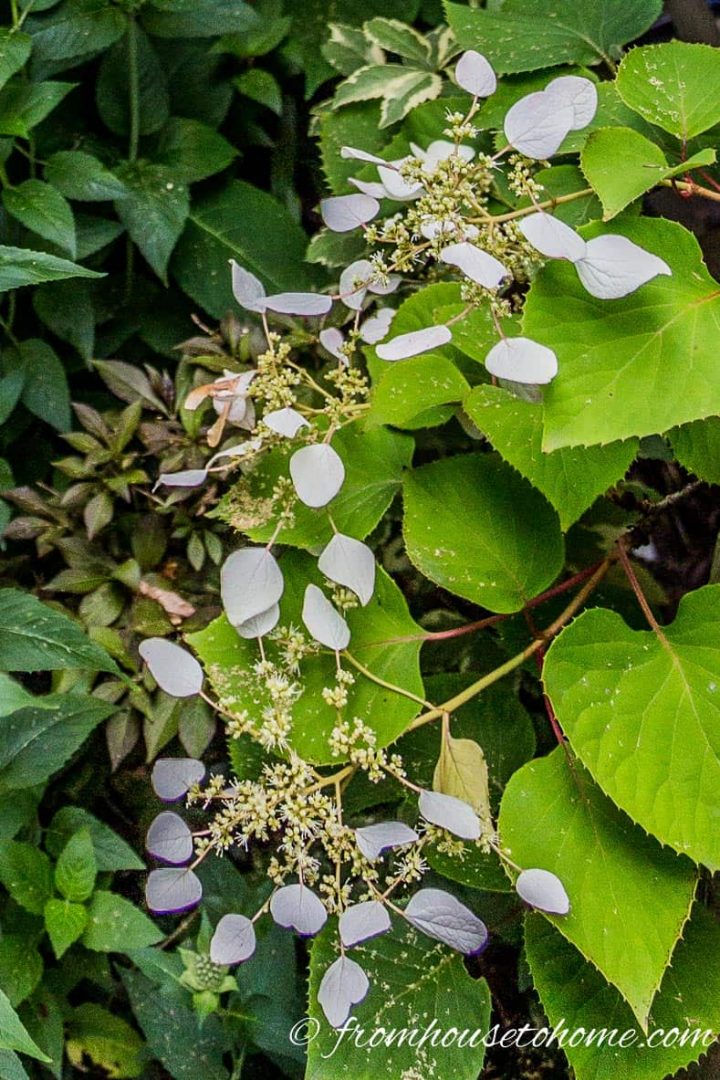
The Climbing Hydrangea is a vine with beautiful, lacy white or pink blooms that takes some time to get going, but is a great addition to the garden once it gets going.
If you're still not sure which kind you have, read our guide on the different types of Hydrangeas and how to identify them.
Now you can look at the reasons why your particular plant has decided not to bloom. And skip over the ones that don't apply to your variety.
1 | Pruning At The Wrong Time
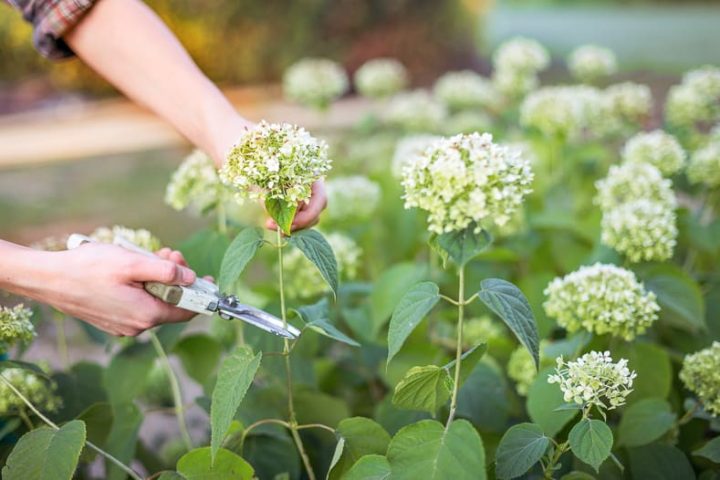
Applies To: All Hydrangeas
I think this is one of the most common causes of Hydrangeas that aren't blooming.
The buds were accidentally cut off.
The tricky part is that different varieties of Hydrangeas should be pruned at different times.
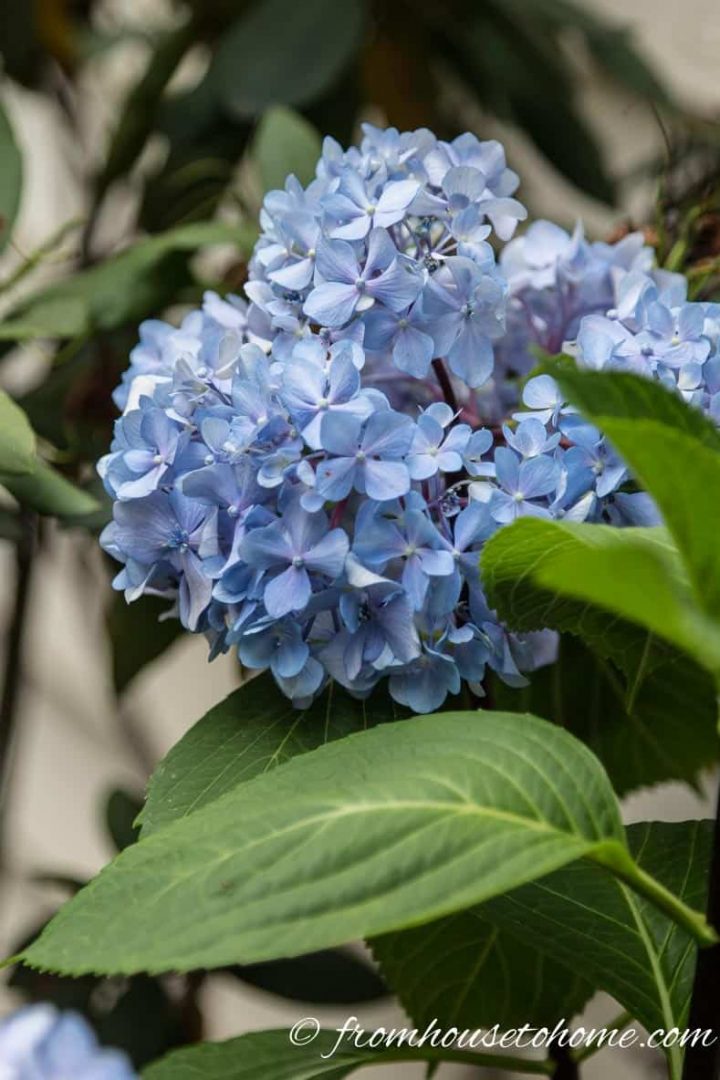
Hydrangea macrophylla, Hydrangea petiolaris and Hydrangea quercifolia all bloom on old wood (ie. last year's stems), and should not be pruned much at all.
You can cut the ends off the branches, up to the first set of 2 leaves, if you want to dead head the plants immediately after blooming.
But cutting any more than that is probably removing some of next year's blooms. And that includes cutting blooms for your dining room table flower arrangement.
The one exception is the reblooming “Endless Summer” series of Hydrangea macrophylla which blooms on both old and new wood.
So technically, you can prune them and still get some flowers.
However, you will get more flowers if you prune them as if they were old wood bloomers.
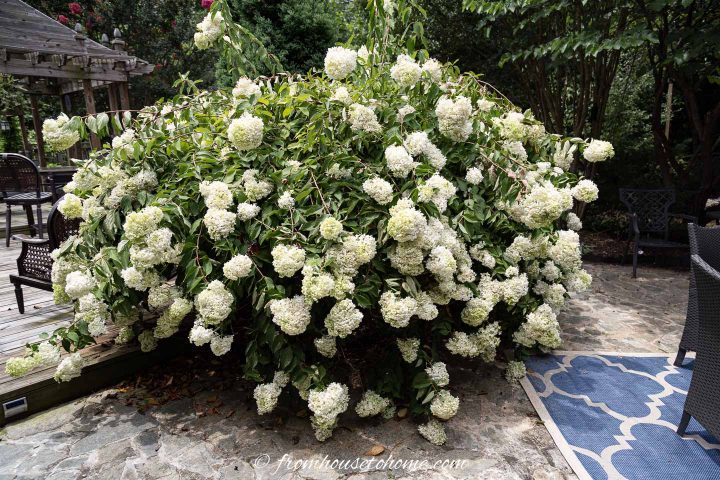
Hydrangea paniculata and Hydrangea aborescens bloom on new wood.
That means they can be safely pruned in the early spring before the branches start to grow.
And H. aborescens often does best if you cut it right down to the ground.
Of course, in all cases, pruning to remove dead branches is always a good practice.
Learn more about pruning Hydrangeas HERE.
2 | The Plant Is Too Young
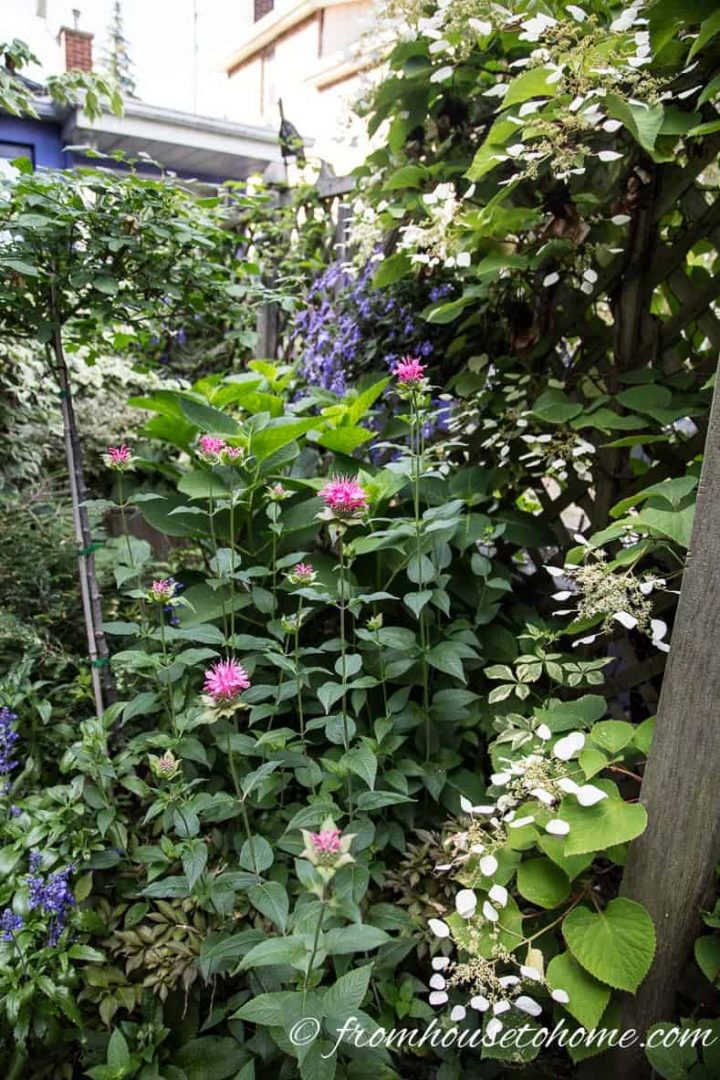
Applies To: H. paniculata, H. aborescens, H. petiolaris
Both H. paniculata and H. aborescens require a couple of years to get established before they will start to produce mass blooms.
H. petiolaris takes even longer than that to get established…give it about 5 years to really start putting on a show.
3 | Late Frost
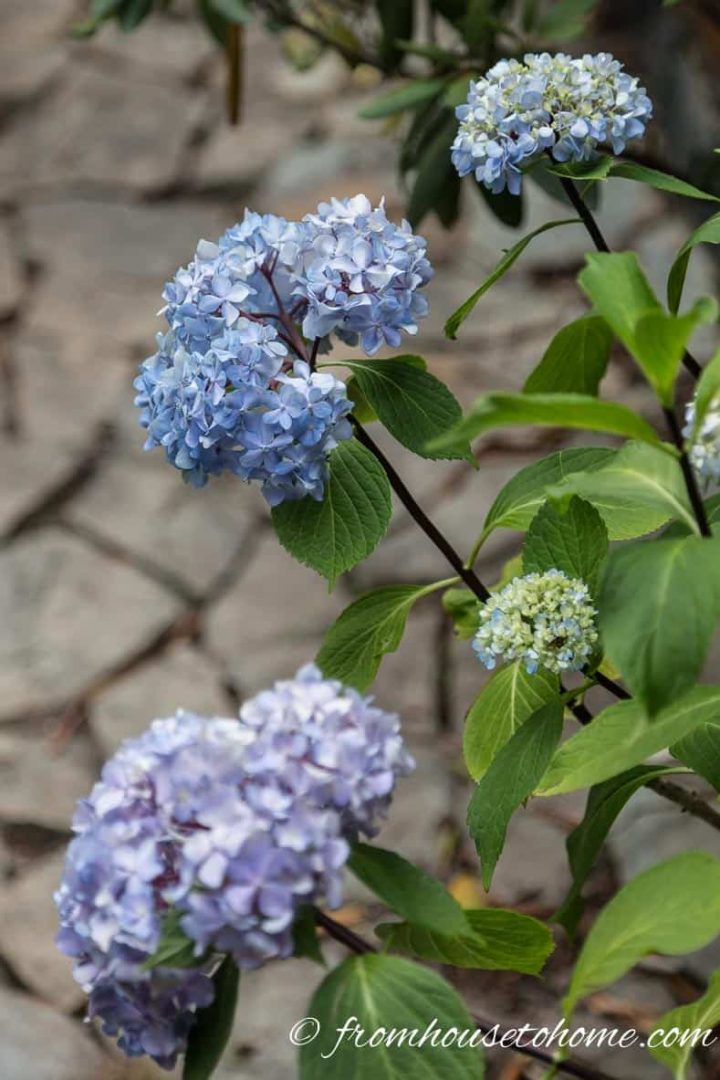
Applies To: H. macrophylla, H. quercifolia
Both H. macrophylla and H. quercifolia have buds that are very sensitive to late spring frosts.
So if you live in an area that can get a cold spell after it has been warm for a while (like I do in Upstate South Carolina), be prepared to cover them if necessary.
Planting them in a protected area by the house can also help.
4 | Too Much Fertilizer
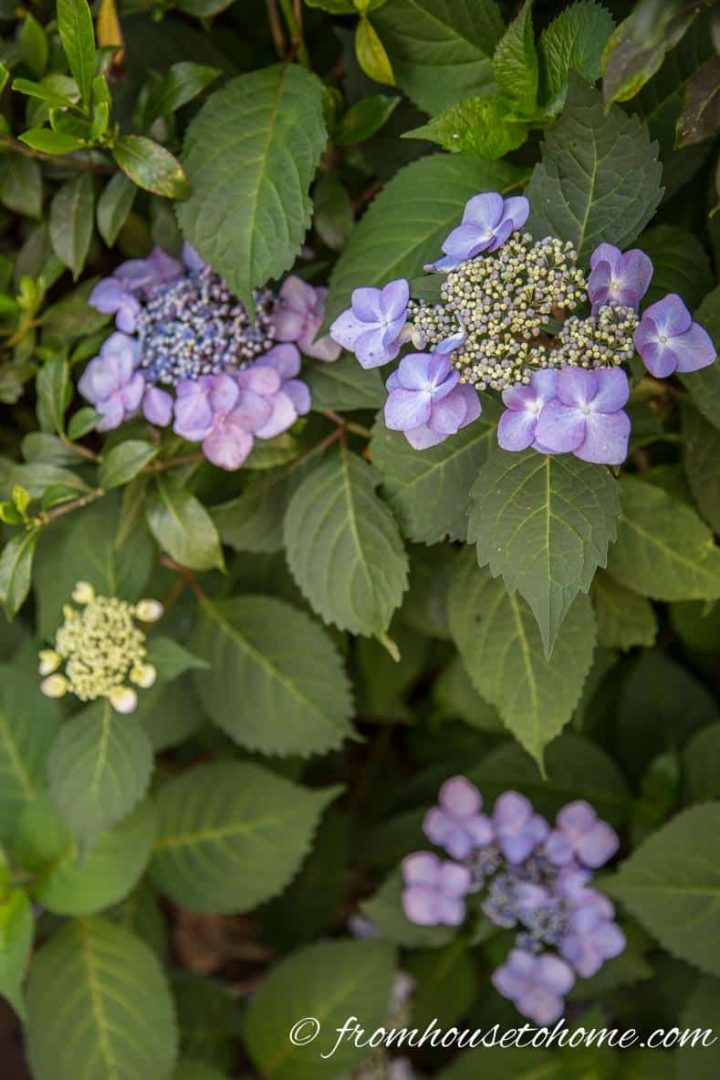
Applies To: All Hydrangeas
This one sounds a little strange. Fertilizer is supposed to make plants grow better, right?
With Hydrangeas, too much fertilizer actually encourages lots of leaves and fewer flowers.
If you want to use fertilizer, one application of a well-balanced slow-release fertilizer in the spring should be enough.
5 | The Soil Is Too Dry
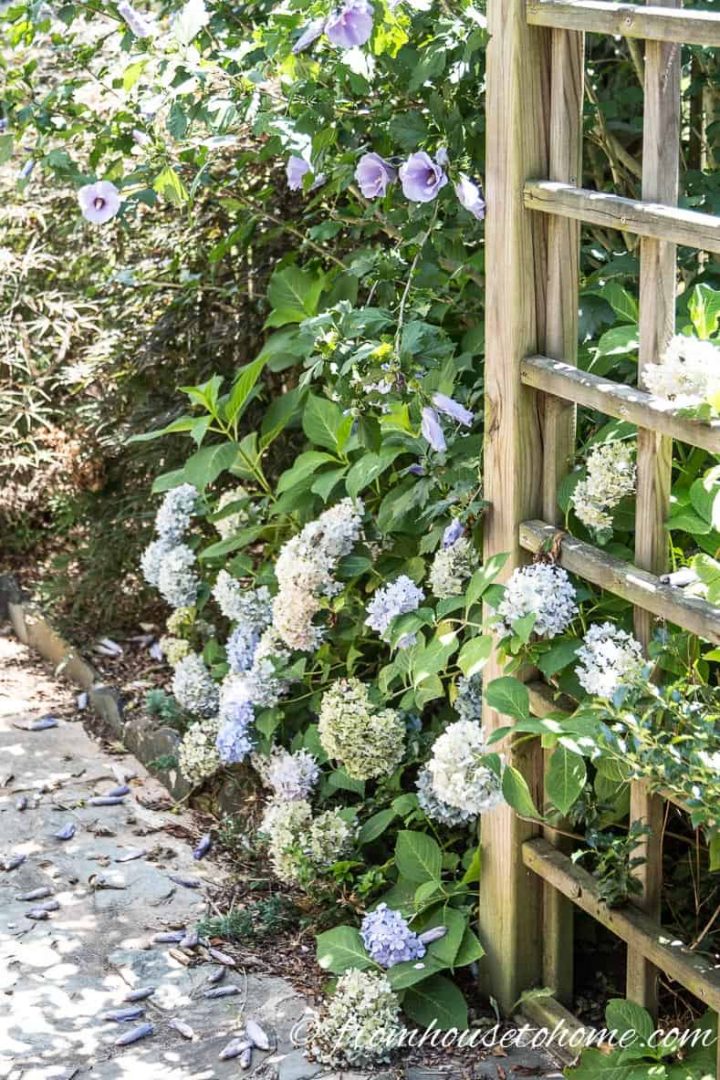
Applies To: All Hydrangeas
All Hydrangeas dislike dry conditions, and won't grow (or bloom) very well if they aren't watered regularly.
Adding a layer of mulch will also help to get the soil moist.
If you are looking for a variety that is more likely to grow successfully in dry conditions, try H. paniculata.
Once they get established, they actually tolerate dry conditions fairly well.
6 | Too Many Deer
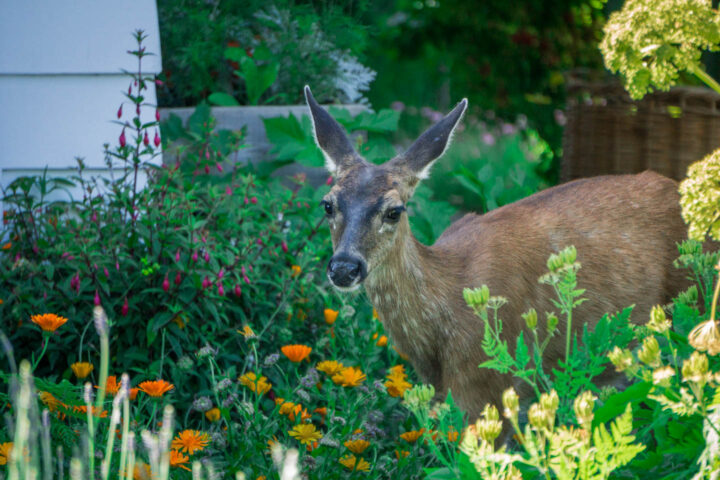
Applies To: All Hydrangeas
Apparently, deer love Hydrangeas as much as I do!
If you live in an area with deer, they may be doing some unneeded pruning for you…and preventing your Hydrangeas from blooming.
This can be a difficult problem to solve (as anyone who has tried to stop deer from feasting on their garden probably knows).
Building a 6-foot fence around my yard was the only way I stopped them from coming into my yard. (You can find more ways to keep deer out of your yard HERE.)
7 | You're Too Impatient
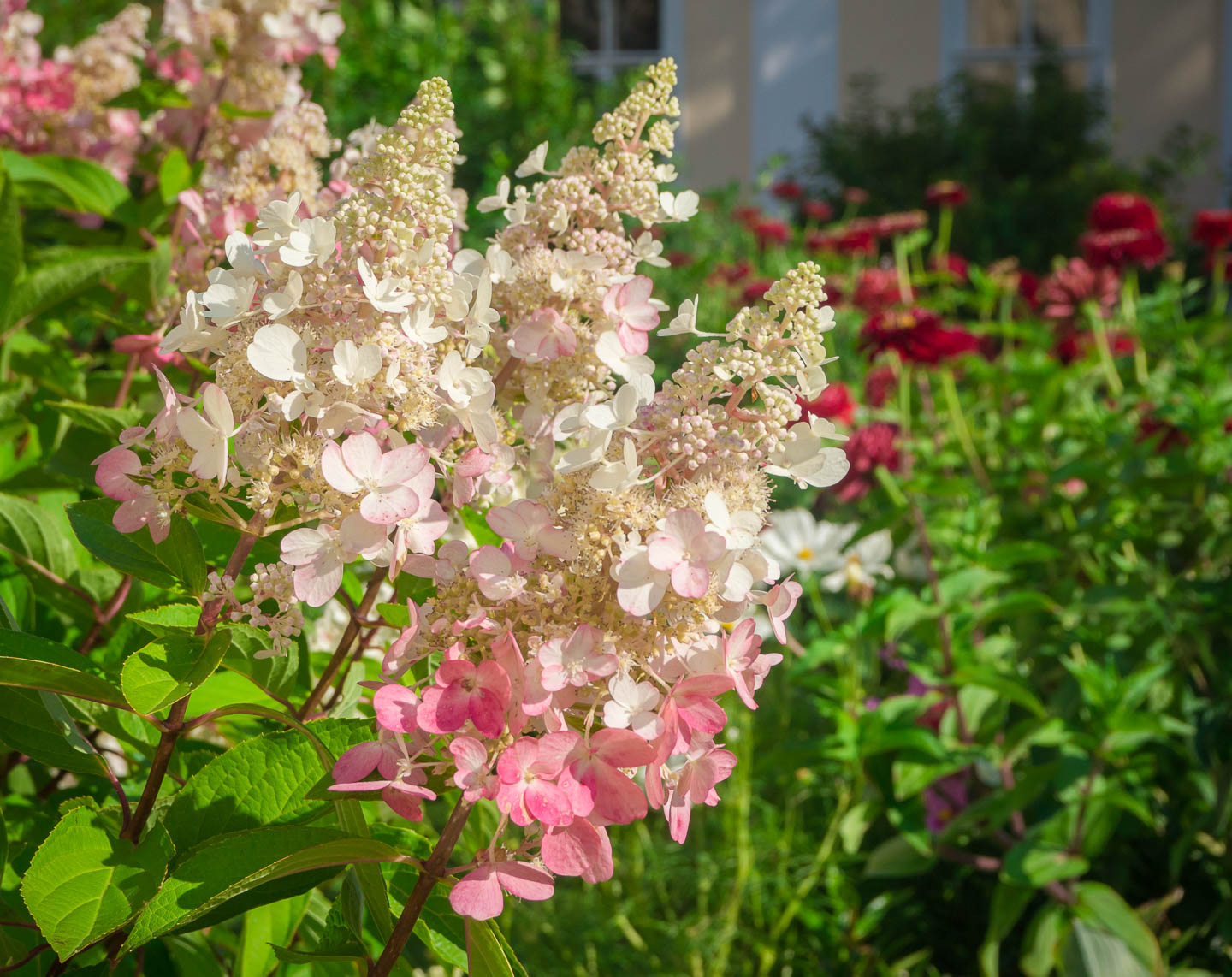
Applies To: H. paniculata
H. paniculata blooms later in the season than the other hydrangeas.
So don't be too impatient waiting to see its blooms…it may just be taking its time getting started.
8 | Not Enough Light

Applies To: All Hydrangeas
The general rule of thumb for most Hydrangeas is that they require about 4 hours of sun per day, and they prefer to get it in the morning.
But it also depends on where you live.
The further North you go, the more sun they can stand.
The further South, the more shade they like.
The one exception is H. paniculata which blooms much better everywhere in full sun (at least 6 hours per day).
This standard variety of the Pee Gee Hydrangea beside my deck gets sun almost all day long and it is always covered in blooms.
Solving this problem usually requires moving the plant to a better location…it is much easier to make sure that it is planted in the right place to begin with…
The great thing about most of these problems is that Hydrangeas are very forgiving plants.
So even if you don't get any flowers this year, all you have to do is correct the issue and you'll be rewarded with big, beautiful blooms for years to come!
Other gardening tips you might like
- The different types of Hydrangeas
- How to prune Hydrangeas
- Bushes to plant under trees
- Shade-loving ground cover perennials
- Flowering hedge plants
- Best evergreen shrubs for full sun
Have comments or questions on why your Hydrangeas are not blooming? Tell us in the section below.
Pin It So You Don't Forget It!
